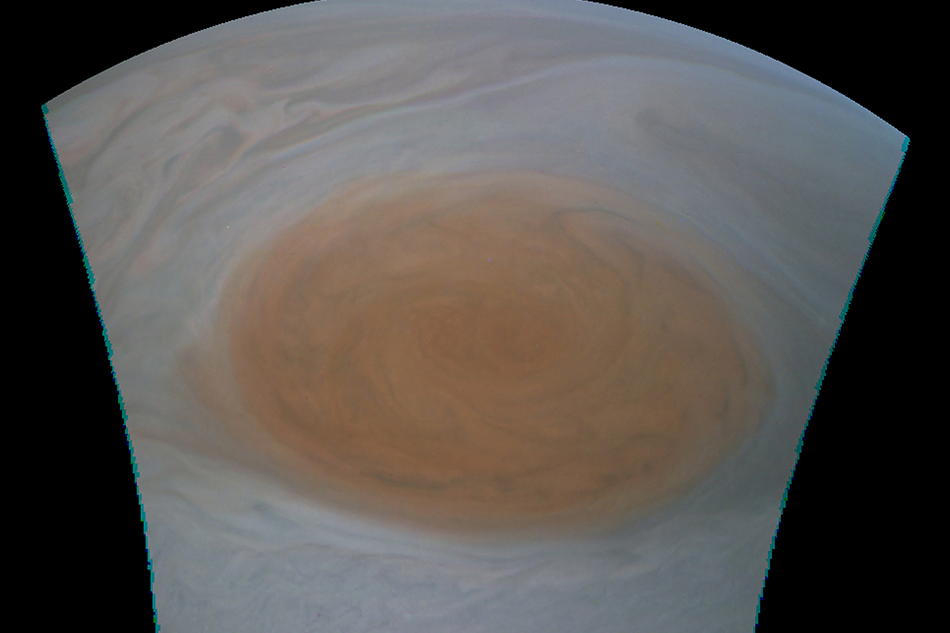LOOK: NASA releases new images of raging storm on Jupiter | ABS-CBN
ADVERTISEMENT

Welcome, Kapamilya! We use cookies to improve your browsing experience. Continuing to use this site means you agree to our use of cookies. Tell me more!
LOOK: NASA releases new images of raging storm on Jupiter
LOOK: NASA releases new images of raging storm on Jupiter
Agence France-Presse
Published Jul 13, 2017 09:15 AM PHT
MIAMI - NASA on Wednesday released a series of stunning images of a raging storm on Jupiter, known as the Great Red Spot, snapped earlier this week as an unmanned probe zipped by.
MIAMI - NASA on Wednesday released a series of stunning images of a raging storm on Jupiter, known as the Great Red Spot, snapped earlier this week as an unmanned probe zipped by.
The US space agency's Juno spacecraft flew over the storm late Monday, offering humanity's closest look yet at the iconic feature of our solar system's largest planet.
The US space agency's Juno spacecraft flew over the storm late Monday, offering humanity's closest look yet at the iconic feature of our solar system's largest planet.
"For hundreds of years scientists have been observing, wondering and theorizing about Jupiter's Great Red Spot," said Scott Bolton, Juno principal investigator from the Southwest Research Institute in San Antonio.
"For hundreds of years scientists have been observing, wondering and theorizing about Jupiter's Great Red Spot," said Scott Bolton, Juno principal investigator from the Southwest Research Institute in San Antonio.
"Now we have the best pictures ever."
"Now we have the best pictures ever."
ADVERTISEMENT
The pictures can be viewed at https://www.missionjuno.swri.edu/junocam/processing
The pictures can be viewed at https://www.missionjuno.swri.edu/junocam/processing
Scientists hope to learn more about what drives the storm, and Bolton said it would take some time to analyze the data captured by Juno's eight instruments as it passed over the tempest a height of 5,600 miles (9,000 kilometers).
Scientists hope to learn more about what drives the storm, and Bolton said it would take some time to analyze the data captured by Juno's eight instruments as it passed over the tempest a height of 5,600 miles (9,000 kilometers).
The Great Red Spot measured 10,159 miles (16,350 kilometers) wide on April 3 of this year, which is 1.3 times the size of the Earth.
The Great Red Spot measured 10,159 miles (16,350 kilometers) wide on April 3 of this year, which is 1.3 times the size of the Earth.
It has been monitored since 1830 and has possibly existed for more than 350 years.
It has been monitored since 1830 and has possibly existed for more than 350 years.
Juno launched in 2011 and began orbiting Jupiter last year. Its next flyby is planned for early September.
Juno launched in 2011 and began orbiting Jupiter last year. Its next flyby is planned for early September.
ADVERTISEMENT
"These highly-anticipated images of Jupiter's Great Red Spot are the 'perfect storm' of art and science," said Jim Green, NASA's director of planetary science.
"These highly-anticipated images of Jupiter's Great Red Spot are the 'perfect storm' of art and science," said Jim Green, NASA's director of planetary science.
"We are pleased to share the beauty and excitement of space science with everyone."
"We are pleased to share the beauty and excitement of space science with everyone."
© Agence France-Presse
© Agence France-Presse
ADVERTISEMENT
ADVERTISEMENT



